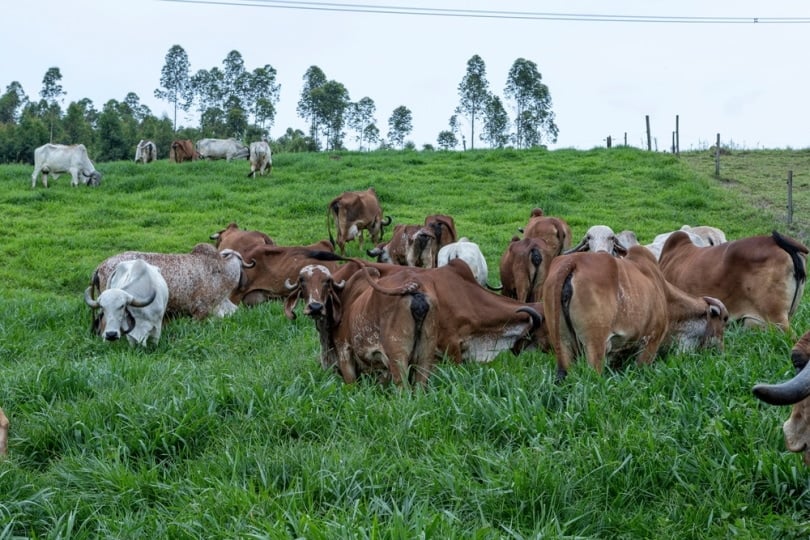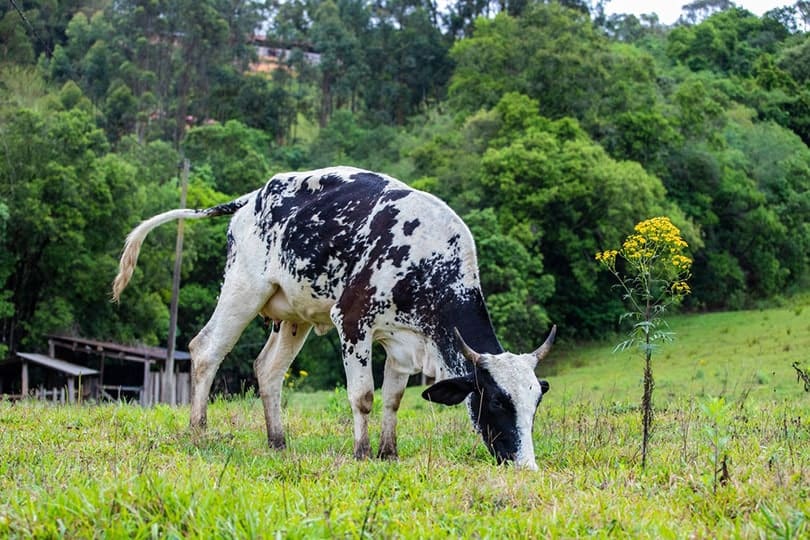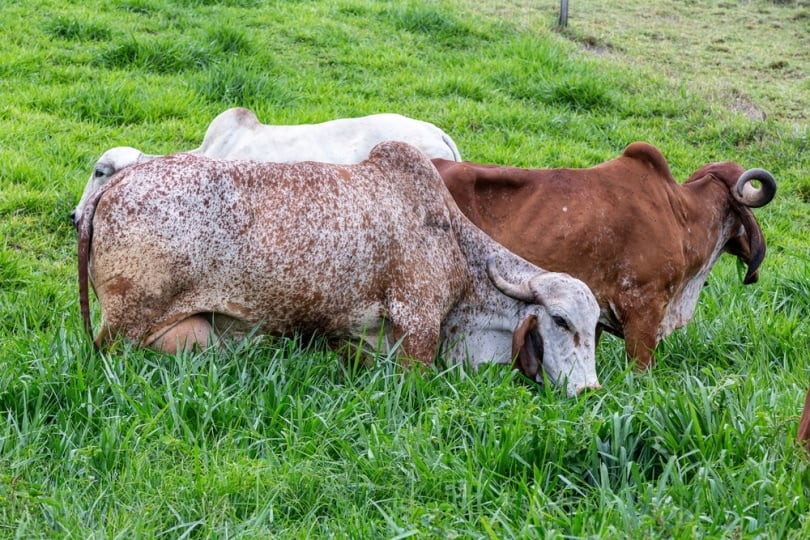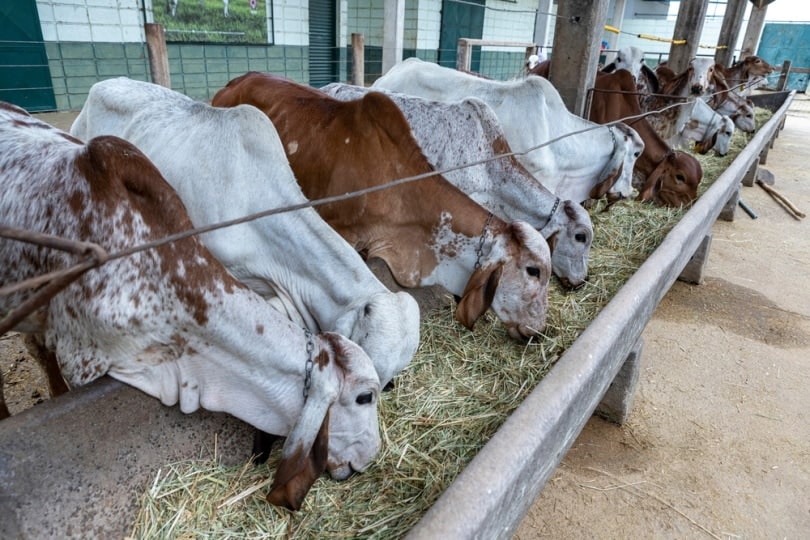The Girolando cow is a new type of Holstein cow that’s gaining momentum in Brazil. This cow breed has promising milk productivity and has even beat a world record for most milk produced in a day1! So, if you live in a hot climate and are interested in Girolandos, keep reading.

Quick Facts About Girolando Cows

| Breed Name: | Girolando |
| Place of Origin: | Brazil |
| Uses: | Milk |
| Bull (Male) Size: | 1,433 pounds |
| Cow (Female) Size: | 739 pounds |
| Color: | Black and white |
| Lifespan: | 15–20 years |
| Climate Tolerance: | Any (best for hot climates) |
| Care Level: | Easy |
| Production: | 950 gallons per year |
| Milk Composition: | 4% Butterfat |
| Rarity: | Vulnerable |
Girolando Origins
The Girolando dates back to the 1940s in Vale do Paraiba. It’s believed that this breed was created by accident when a Gir Bull invaded a pasture with Holstein cows. Luckily, Brazilian farmers were already looking for a new breed to satisfy the growing need for food production.
Farmers noticed this new breed had combined characteristics of its parents and were intrigued by the breed’s rusticity and milk production. Farmers got to work investing in the breed. The result was the Girolando!
This breed has grown in popularity ever since and is now responsible for 80% of Brazil’s milk production. The Ministry of Agriculture finally set the standards for the breed in 1989 and officially recognized the breed in 1996.

Girolando Characteristics
Breed standards state that the Girolando must be ⅜ Gir and ⅝ Holstein. The Girolando cow doesn’t produce as much milk as the Holstein, but combined with its adaptability and resistance to disease, Girolandos are proving to be a dependable breed.
The Girolando cow is a highly productive, fertile, and efficient cow. Thanks to its shared genes with the Gir, it has excellent resistance, adaptability, and longevity. You can expect this cattle breed to be calm and docile when handling them.
Females have physical attributes perfect for milk production in the tropics, like udder capacity, support, and size of udders. These cows have hardly any issues with calving and have a high number of calves per cow. Bulls are also highly adaptable, efficient foragers, and resistant to diseases and pests. They also gain weight quickly. Some farmers report their bulls gaining over 2 pounds a day.
All of these combined characteristics ensure greater productivity and lower costs.
Uses
You can use Girolandos for meat, but they’re well-known for milk production. Girolandos start calving around 30 months of age, and their milk production peaks between 8–10 years old. Girolandos can even produce quality milk up to 15 years old.
Thanks to genetic improvement, farmers have seen a 53% increase in milk production in the past 18 years.

Appearance & Varieties
Girolandos are usually black and white, but you can find all-black Girolandos sometimes. The ears are large like the Gir cow, and the legs are solid and straight.
Both the females and bulls are muscular. However, cows have a bit more angularity while bulls are stronger and more robust.
Distribution and Habitat
Girolando cows are primarily in Brazil and are gaining popularity. It’s hard to say if this cow breed will reach other parts of the world. But given the Girolando’s milk reputation and adaptability, the breed will likely see a higher demand.
The Girolando is native to the tropics and performs well in hot climates. Thanks to its adaptable nature, this breed can perform well in just about any environment.

Are Girolando Cows Good for Small-Scale Farming?
Girolando cows are great for small and large-scale farming. Right now, farmers are improving the breed for large-scale farms because a single cow can produce a lot of milk. You also can’t find this breed anywhere else except for Brazil. If you want to include this breed on your farm, you’ll have to pull some strings and do some traveling!
Featured Image Credit: casa.da.photo, Shutterstock
